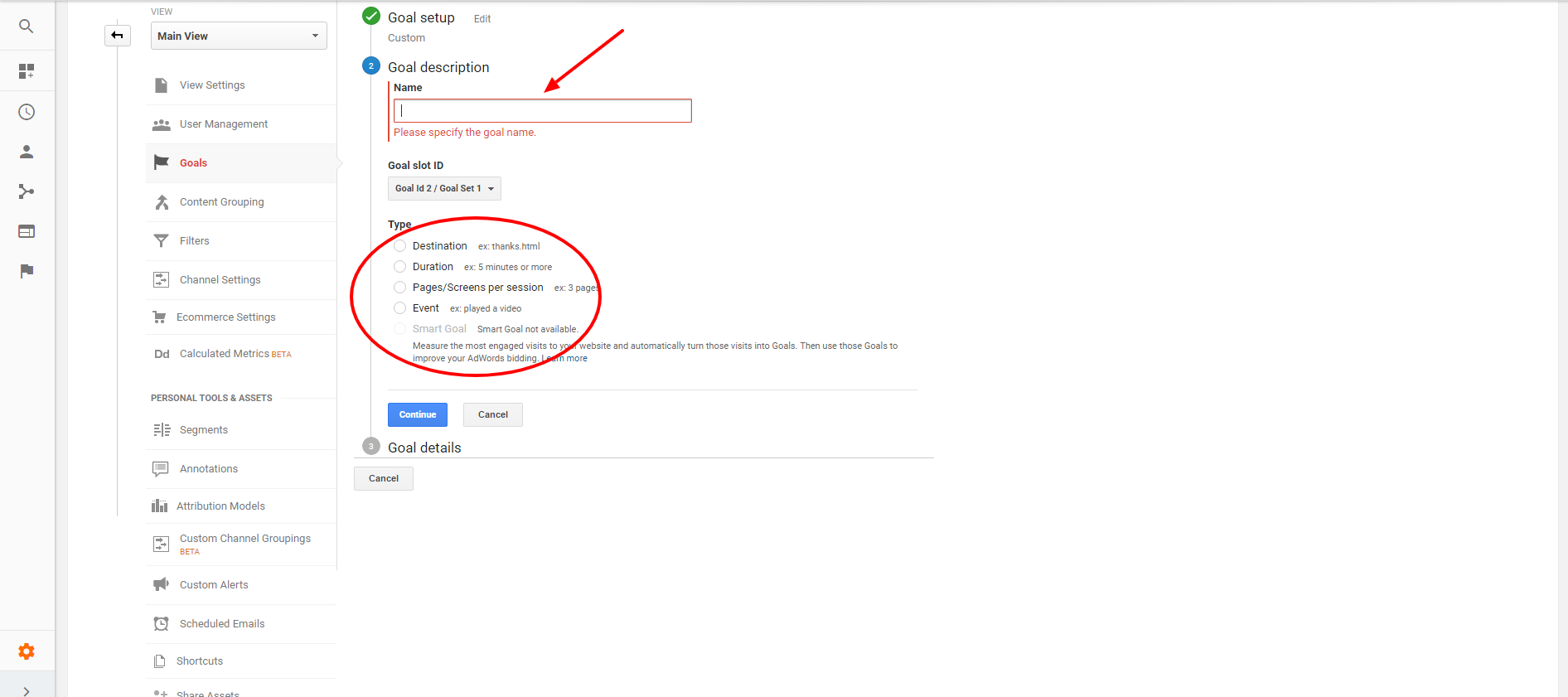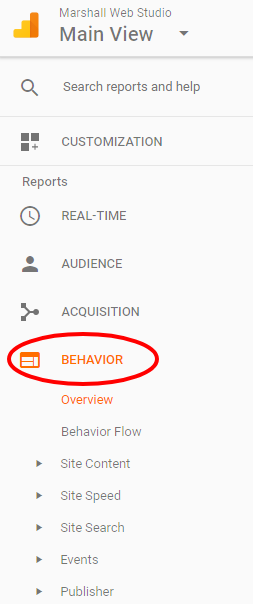Want more conversions? Want to make smarter and better decisions about your SEO and other marketing activities?
Then you need to analyze what people do on your website.
Google Analytics is the single best tool to help you understand user behavior .
Here are three ways you can use Google Analytics to understand exactly what people do when they land on your website.
Use In-Page Analytics to Analyze Website User Behavior
In-Page Analytics is a neat Google Chrome extension that is useful for a couple of reasons:
Quick Access
In-Page Analytics lets you instantly connect to your Google Analytics account without having to log-in to the traditional interface (assuming you’re already logged into Google Chrome). This makes the process so much faster if you want to do a quick check to see how a particular page on your site is performing.
Like the traditional interface, you can select a date range for the data you’d like to see and instantly access page views, average time on page, and bounce rate all while you’re surfing your website.
If you really want to get fancy, you can also view your data by specific segments: all users, new users, organic traffic, paid traffic, and mobile traffic, just to name a few. You can even see how many people are on your site at that exact moment.
Heat Map
What I love most about the extension is the heat map functionality. You can see exactly what percentage of website visitors click on any clickable area of your site. This is so useful because you can see if people are actually clicking on all of the buttons, links, etc. on any given page.
Let’s say you have a button with a call to action that says “read more”. You’ll be able to see the percentage of people who actually click on that button.
You may find out that your “obvious” call to action may not actually be so obvious. Based on the results from the heat map, you can make tweaks and improve the overall user experience of your site.
Check out this screenshot of the footer of my site:
My most clicked on links are to my services, portfolio, and blog. So much for the theory that your about us page is the most popular page on your site.
This is why understanding your analytics and the data specific to your site is critical to understanding how your audience and your website users behave. Knowing general trends can be useful, but nothing is better than knowing and understanding your own stats.
Set Up Conversion Goals to Track Website User Behavior
A goal allows you to measure how often a user takes a specific action on your site.
Google Analytics goals let you track the conversion rate of a particular action you want your website users to take. Goals can be actions (e.g., signing up for a newsletter, signing up for a free gift, making a purchase, or watching a video).
Why is this important?
It allows you to translate your business objectives into measurable actions within your website. Instead of just knowing how many people land on a page, you’ll know what specific action they’re taking (or not taking) on that page.
This information will give you valuable insight into what calls to action you may need to tweak or possibly remove from any given page.
To set up a goal, go to Admin > Goals > New Goal > Select template or Custom (I prefer Custom).
Next, give your goal a name and select the type of goal:
- Destination: The goal is complete when a user lands on a particular page.
- Duration: The goal is based on how long it takes a user to complete an action.
- Pages/Screens per session: The goal is complete when a user browses a certain number of pages.
- Event: The goal is complete when a user triggers an event (such as watching a video).
Lastly, you’ll enter the specific details based on the type of goal you selected and how much detail you would like to see.
For example, you can assign a monetary value to a goal to view the approximate amount of revenue you’ll generate for each completed goal.
My favorite type of goal for tracking website user behavior is a destination goal. It’s simple to configure and it can track visitor actions such as signing up for a free lead magnet.
So as an example, let’s say you have a sign up for a free gift located on several pages within your site. A Google Analytics goal will measure the percentage of users who are actually signing up for your free gift for each page that has your sign-up form. This allows you to not only see how many people are signing up for your free gift but more importantly, you’ll see how many people are signing up on each page.
Google Analytics puts your data into context to easily see which pages are converting the best. Knowing this, you can send traffic directly to the high converting pages and split test to improve the performance of the lower converting pages.
Often times people think their largest traffic sources correspond to their largest number of conversions, but that’s not necessarily the case. By only looking at your traffic reports and not setting up goals, you can miss this piece of the puzzle.
To put this into perspective, let’s say your traffic reports tell you that the majority of your traffic is coming from Pinterest. But when you view your goals, you may see that the majority of your conversions are actually coming from search engine traffic. So even though you may have less search engine traffic than Pinterest traffic, based on your goals the search engine visitors are more inclined to opt-in to your list. Tracking your goals will allow you to easily determine this and you can then adjust your marketing strategies accordingly.
View Behavior Reports to Understand Website User Behavior
Behavior reports are the best tools to use for diving deep into website user behavior.
While it’s great to know the type of people who visit your site (Audience Reports) and how people find their way to your site (Acquisition Reports), the best reports for understanding what actions people are taking when they’re on your website is the suite of Behavior Reports.
Your Behavior Reports can answer these questions and much more:
- Are people actually following the user path you intended?
- What page or blog post are people using the most to sign up for your newsletter?
- Which pages are people staying on for the longest and least amount of time?
- What are people searching for in the search bar on your website?
- What events (such as watching a video) are people doing (or not doing) on your site?
- Which pages are converting the best?
- Which calls to action are not converting and should possibly be removed from the site?
Summary
Knowing how people behave when they’re on your site will help you understand your conversions and how you should structure your marketing campaigns to increase your ROI and overall success.
Image Credits
Featured Image: WOCinTech Chat under CC 2.0
In-post Images: Screenshots by Treva Marshall. Taken June 2017.
Go to Source
Author: Treva Marshall
The post How to Understand User Behavior With Google Analytics by @MarshWebStudio appeared first on On Page SEO Checker.
source http://www.onpageseochecker.com/how-to-understand-user-behavior-with-google-analytics-by-marshwebstudio/




No comments:
Post a Comment